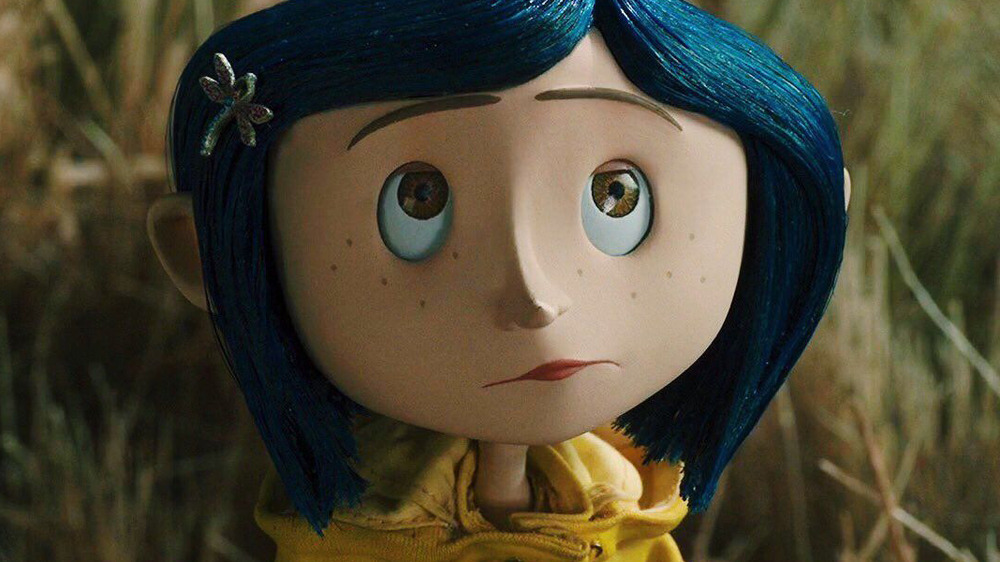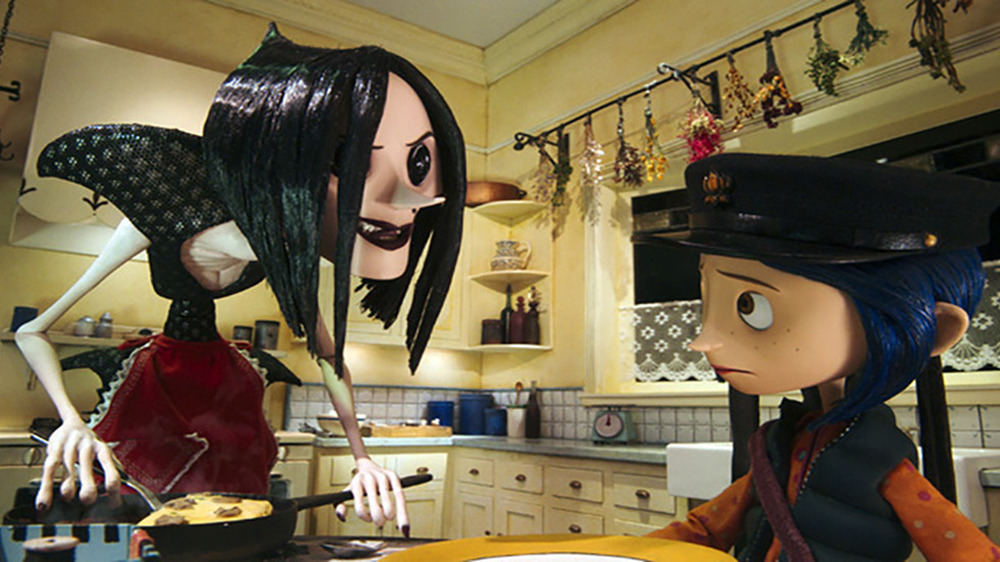Why Horror Fans Are Taking Another Look At Neil Gaiman's Coraline
2009's Coraline is considered an animated family drama, but it's a bit darker than that. There's something about the Other Mother/Beldam that is unnervingly creepy, not to mention the realm she calls home. The whole atmosphere of the movie screams "dark and demented," even if it's a children's movie directed by Henry Selick, known for James and the Giant Peach, The Nightmare Before Christmas, and the upcoming TV series adaptation of the Little Nightmares games.
Coraline is based on acclaimed author Neil Gaiman's dark fantasy novella of the same name, and weirdly enough, adults tend to find the trippy wonderland even more disturbing. The film stars Dakota Fanning as the voice of little Coraline Jones, who becomes curious about her new home in "The Pink Palace" while her parents remain overworked. Things start to go sideways once boredom takes hold, and she discovers a secret passage that leads to a parallel world. This sounds like a children's movie, but the devil is in the details. What are the reasons Coraline could be considered a folk horror film?
All things in Coraline lead to Other Mother/Beldam
According to Bustle, Other Mother (Teri Hatcher) is loosely inspired by a story called "The New Mother" by Victorian author Lucy Clifford, which has been retold in folklore collections as "The Pear Drum," and reimagined by Alvin Schwartz as "The Drum" for the classic anthology Scary Stories to Tell in the Dark.
In a Reddit thread discussing the movie version of Coraline, a user under the name u/TestingForCovid asked if the story could be considered folk horror, and a lot of signs are pointing to "yes." The user went on to mention that the story is set in a "rural location in the mountains of Oregon, it has an isolated population, there are skewed morals (eating children to stay young), and it has violent/supernatural happenings (the entire end of the film)."
These are all really good points, to which another user added that the sewing of the buttons on the eyes can be considered ritualistic, and similar situations are often found in other folk horrors. There's also a "Hansel and Gretel" vibe about it, because the Other Mother is kind and attentive at first, giving Coraline treats and other goodies. By the end, when Other Mother doesn't get what she wants, she reveals her incredibly terrifying identity.

